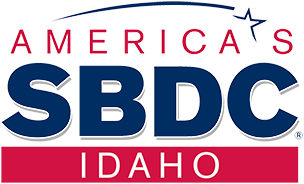Market Analysis
Learning about the industry and markets demonstrates that you understand external business influences, and it enhances your ability to make better informed business decisions. You will need to do research to complete this section. A good place to start is with a research librarian found at both public and college/university libraries.
This section of your plan should illustrate your industry and market knowledge as well as your research findings and conclusions, including:
- Industry description and outlook: Assess elements including: current size, historic and projected growth, life cycle stage, economic and/or technology impacts, financial characteristics, risks, and opportunities.
- Target market(s): Identify the customer groups within your industry and determine which markets you will target. Do this by defining the critical needs of your customers and consider characteristics such as: size, growth trends, and demographic/geographic/psychographic factors
- Competitive Analysis: Identify your competitors, both direct and in-direct. What are their strengths and weaknesses? How will you differentiate your business? What competitive advantages does your business have?
- Regulatory restrictions: Identify restrictions that may impact your business
- Price and margin targets: Assess targets regarding pricing and margins and identify how your business compares.
Products and Services
Describe your products and services. Instead of a lot of verbiage, this is a great place to use a short introductory paragraph, followed by a table that provides a comprehensive representation of your products/services across important characteristics, closing with summary comments about how your products/services will fuel future growth and success.
Use a table to format a list of your products/services related to important characteristics, consider including: Quality, Price, Margin, Volume, Features & Benefits, Intellectual Property, Competitive Advantages, Phasing Out, New Introductions, and Research & Development Activities.
Marketing and Sales
Marketing is a process of building relationships, developing customers, and generating sales revenue…it is the lifeblood of every business. To develop customers and generate sales every business needs a Marketing Plan. The Marketing Plan defines:
- What you want to accomplish – objectives and goals
- How you will do it – strategies for achieving objectives and goals
- The tools used to make it happen. Tools are a mix of marketing tactics involving product, price, promotion, and placement
Marketing Plan Outline
- Objectives: Define what your business intends to accomplish at a high level, for example, “we will become the leader in sales in our geographic market.”
- Goals: Define specific metrics to be achieved, for example, “We will increase sales 20% in our residential customer group by December 31st.”
- Strategies: Describe plans for achieving objectives, for example, “We will increase our internal sales force to achieve growth in our current markets and we will contract with independent sales representatives to expand into new geographic markets.” Key strategy areas that should be included in your plan are: a) market positioning and penetration, b) sales force, c) growth, d) distribution and, e) communications.
- Product: Products lines should always be based on the needs of the customer. The best product ideas are those that meet customer needs in new ways, or improve upon an existing product solution in ways that are meaningful to the customer. Describe the product strategies that will drive your marketing plan (what innovations are planned, how many products will you offer, what will be the depth and breadth of your product lines be?)
- Price: Successful pricing strategies maximize profits and provide good value to the customer. Define your pricing strategies (for example, cost-based pricing, competition based pricing) and discuss your approach to monitoring and adjusting pricing.
- Promotion: Summarize how your business will use specific activities to create awareness and positively influence opinion to generate sales. Promotion includes elements such as: public relations, advertising, social media, sponsorships, events, and networking. You should explain the tools you plan to use, along with why, how, and when you will use them (creating a promotional calendar may be useful). You will also need to address budget requirements to cover promotion costs as well as what you intend to measure financially to show the effectiveness of the tools you chose.
- Placement: Summarize your market positioning strategy, including how you will differentiate your product or service from your competition. Describe distribution channels. Describe the relationship between price and quality in your products/services. Describe whether or not you are effectively positioned in the market based on the price/quality relationship and that of your competitors. Is your position consistent with your desired image? Explain why or why not.
- Customer Service: Last, but certainly not least, in fact one could argue that this may be one of the most important things that will distinguish your business with customers. Describe your customer service strategies and how you will implement them. Include customer retention strategies and use of both employees and technology in the discussion. Describe how your customer service strategy “fits” with the other promotional strategies and goals.





